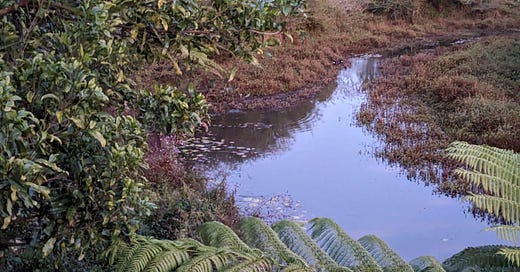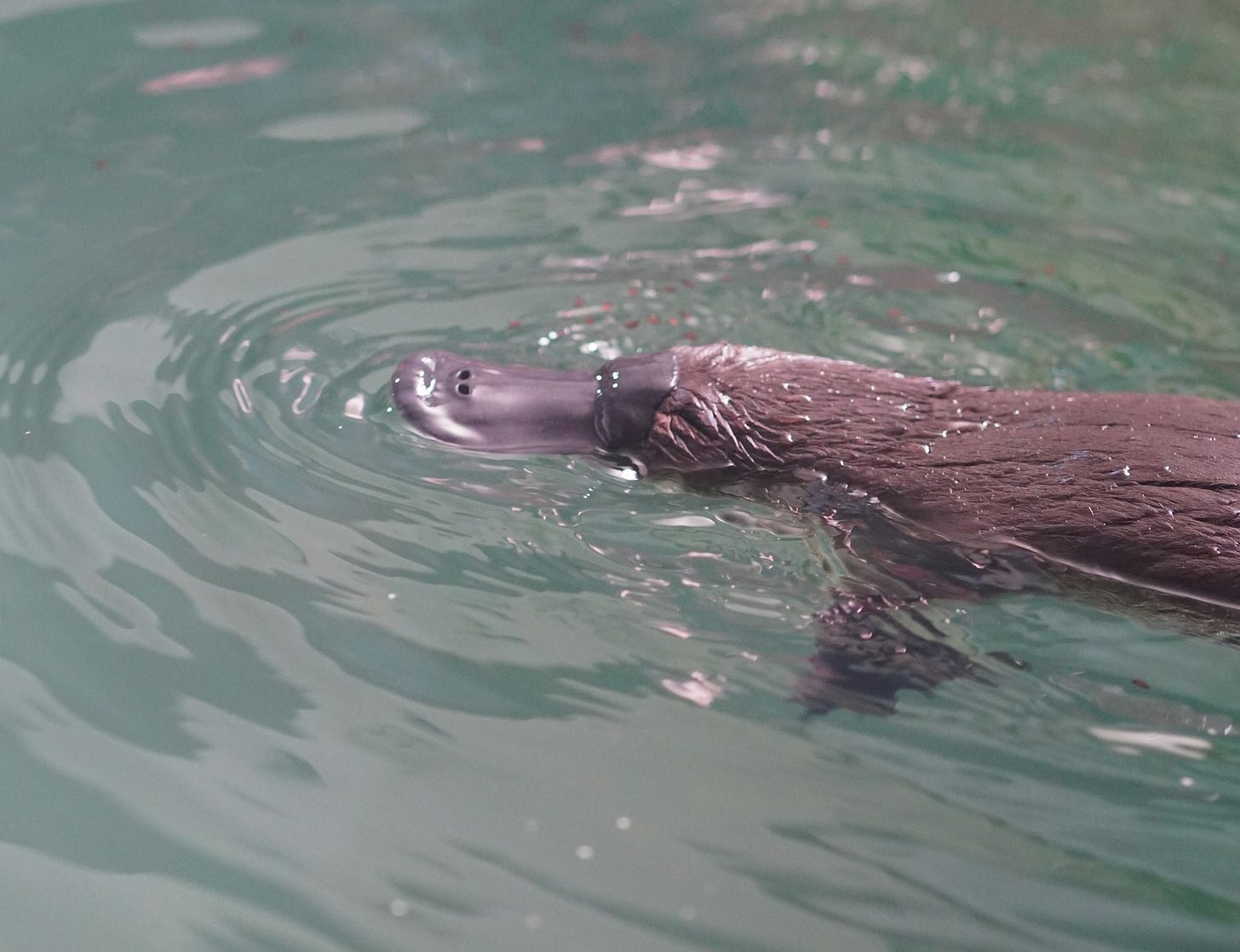Ripples on the Water
Dawn. Darkness slowly giving way to light. I’ve been sitting in the cold dark for a while waiting. Now I can make out the surface of the creek, the broad, flat, shallow area in front of the hide. I strain my eyes, watching for ripples, for the tell-tale break of the surface. I wait, almost holding my breath. Expectant.
There’s a movement in the shallows. A coot. Not what I am waiting for. I scan the water. Hoping. There! There it is - that ripple, a small furry body gliding along the surface. A platypus!
I’m not at home. I’m in south-east Queensland, in the mountainous hinterland north of Brisbane, inland from the Sunshine coast. This creek, tucked in the valley between steep hills, is home to several platypuses. It’s one of the two places I have seen platypuses in the wild. The other was thousands of kilometres south of here in Victoria. On the western side of the Australian continent, where I live, there aren’t any platypuses. There’s not even any indication that there ever were any in the west. Seeing them is a treat. I watch, transfixed.
(Can you see the ripples? Hint - near the top edge of the bank in the middle of the photo.)
Only once, in the twenty minutes that I watch the platypus before it slips beneath the surface and doesn’t reappear, do I see its full body. For a very brief time - less than a minute - it sits atop some pond weed and I can see it in all its strangeness. It’s no wonder a hoax was suspected when platypus specimens first arrived in Britain. But seriously, who would think to invent such a creature - a bill like a duck, a tail like a beaver, furry. Then the real oddity - it lays eggs. An egg laying mammal, or monotreme. The only other monotremes are echidnas. (There are four species of echidna, so five species of monotreme in the world. All are native to Australia and New Guinea.) To cap off thje platypus’s strangeness, the males have spurs on their hind legs with which they can inject venom, making them one of very few venemous mammals. (Other venemous mammals inlcude vampire bats, slow orises and shrews.) Only male platypuses are venemous and the venom is mainly used in fighting other males, especially during breeding season when venom levels peak. The sting is not fatal to humans but is reportedly excruciatingly painful. I’m happy to say I have no personal experience of that. The platypus I was watching was some distance from me; I don’t know if it was male or female.
Platypuses have short legs and are proficient swimmers, using their webbed front feet to power them along and their hind legs as rudders to guide their direction. They move much better in the water than on land.
From, my vantage point in the hide, most of my view of the platypus is of three bumps on the water’s surface - the head, body and tail - and a ripple of water behind it. Sometimes it dives under the surface and all I can see is the roil of the water as the platypus fossicks on the creek bed. Apparently they close their ears, nostrils and eyes when they swim underwater; their bill is highly sensory and they use it alone to find their prey, which mostly consists of aquatic invertebrates.
Image credit Aaron de Witt on Unplash (cropped)
I sit in the cold, mesmerised. A couple of weeks prior, I had sat on the beach not far from where I live on the south coast of Western Australia and watched whales in the ocean. The animals are vastly different in size but the experience of watching them was remarkably similar. I could see little of their bodies, but somehow those glimpses fill me with deep delight. A glimpse of the wild. A privilege.
I watch the platypus until it disappears beneath the water’s surface the final time. I guess that its burrow is in the creek bank at that point. The entrance to platypus burrows may be submerged or not; I suspect this particular platypus had a submerged entrance somewhere near where I last saw it. They spend their days in their burrows and forage at night, so it would have been almost done by the time I first saw it. They spend a lot of time foraging becaue they need to consume a lot of food - 20 to 50 per cent of their body weight each day!
I sat a while before I was convinced that my platypus viewing was over for the morning. The sun was up by then and the world colouring. The air was crisp and the frosted grass crunched under foot as I walked away from the creek, deeply satisfied from seeing the platypus but looking forward to a cup of tea and a warm room.
See you outside,
Jill




